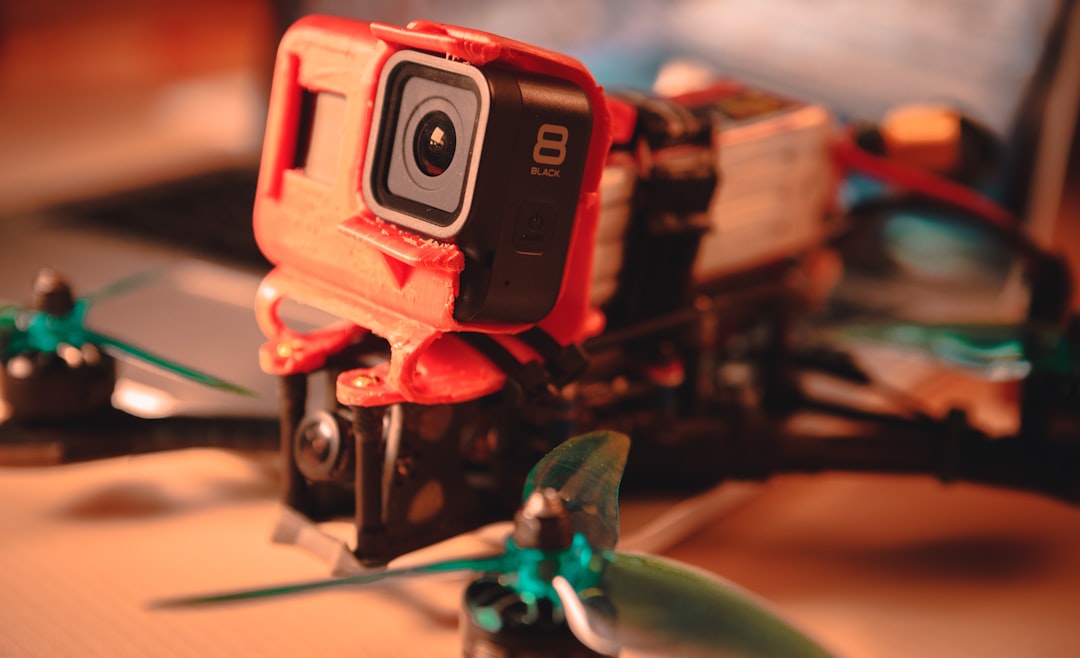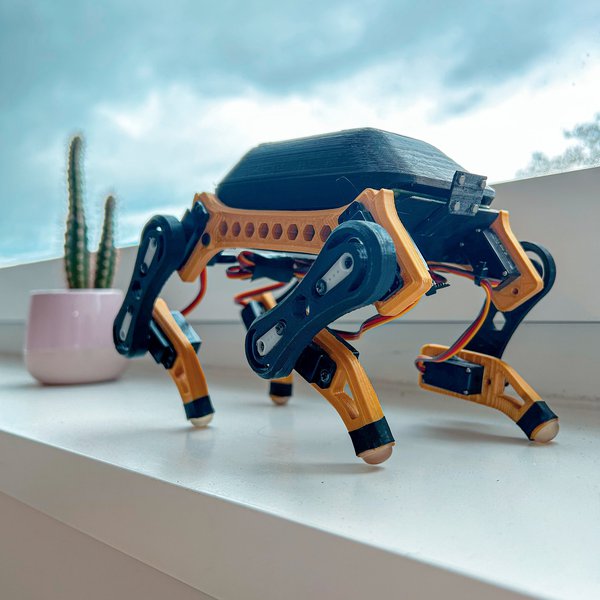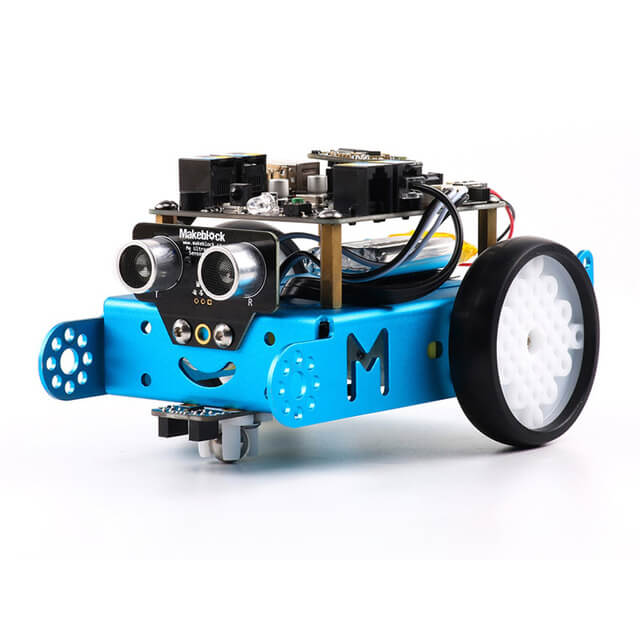
The New Breed of Educational Robots: How Open-Source Quadruped Kits Are Revolutionizing STEM Learning
The Dawn of Accessible Advanced Robotics in Education
For years, the world of advanced robotics, particularly legged locomotion, has been dominated by multi-million dollar research projects and high-end commercial platforms, seemingly out of reach for classrooms and hobbyists. The latest Educational Robot News, however, signals a dramatic shift in this landscape. A new wave of open-source, four-footed (quadruped) robots is emerging, offering the sophisticated dynamics of their famous industrial counterparts at a fraction of the cost. These kits, often powered by single-board computers like the Raspberry Pi and constructed from 3D-printed parts, are not just advanced toys; they are powerful, accessible platforms for teaching complex principles in science, technology, engineering, and mathematics (STEM). This movement is democratizing robotics, moving beyond simple wheeled rovers and into the complex realm of dynamic stability, inverse kinematics, and machine learning. As this trend accelerates, it’s reshaping what’s possible in hands-on education, making it a critical topic in STEM Toy News and AI Toy Research News alike.
An Overview of the Open-Source Quadruped Revolution
The core appeal of this new generation of educational robots lies in their fusion of accessibility and sophistication. Unlike closed, proprietary systems, these projects thrive on open-source principles, empowering users to not just operate the robot, but to understand, modify, and improve upon its very design. This trend is a major headline in Robot Kit News, as it represents a fundamental change in how students and enthusiasts engage with cutting-edge technology.
Key Characteristics of the New Educational Quadruped
These platforms share a common DNA that sets them apart from both simple robot toys and expensive industrial machines. Understanding these traits is key to appreciating their educational value.
- Affordability and Accessibility: The most significant barrier to advanced robotics education has always been cost. By leveraging inexpensive single-board computers, common servo motors, and 3D-printable components, these kits can often be built for a few hundred dollars, not tens of thousands. This brings them within the budget of schools, robotics clubs, and individual learners. This focus on cost-effectiveness is a recurring theme in AI Toy Marketplace News.
- Open-Source Philosophy: The hardware designs (CAD files), software (code for control and AI), and electronics schematics are typically available for free online. This transparency, a hot topic in Toy AI Platform News, allows students to see exactly how the robot works, fostering a deeper understanding than a “black box” product ever could. It also encourages a vibrant ecosystem, as highlighted in AI Toy Community News, where users share modifications and improvements.
- Modularity and Customization: Thanks to 3D printing and modular design, these robots are highly customizable. A user can easily design and print new legs, add different sensors, or create unique attachments. This aspect of AI Toy Customization News transforms the robot from a static product into a dynamic, evolving project. It’s a real-world application of design and engineering principles, making it a star in the world of Smart Construction Toy News and Robot Building Block News.
- Powerful Onboard Computing: The use of platforms like the Raspberry Pi or NVIDIA Jetson Nano means these robots have enough processing power to run complex software, including Linux-based operating systems, Robot Operating System (ROS), and even lightweight machine learning models for computer vision. This elevates them far beyond the category of Remote Control AI Toy News, turning them into true autonomous agents.
From Boston Dynamics to the Classroom: A Scaled-Down Revolution
While these educational robots may resemble famous quadrupeds like Boston Dynamics’ Spot on a smaller scale, their purpose is fundamentally different. Spot is a tool for industrial inspection and data collection. An open-source educational quadruped is a tool for learning. It’s designed to be assembled, programmed, and even broken and repaired by the user. This hands-on process is where the most valuable learning occurs, covering everything from mechanical assembly and electronics to advanced Python programming and AI algorithm development. This shift is a leading story in AI Learning Toy News, demonstrating a move towards more challenging and rewarding educational experiences.
A Deep Dive into the Technology Stack
To truly appreciate the educational potential of these quadruped robots, it’s essential to break down their core components. Each part of the system offers a unique learning opportunity, creating a comprehensive, multi-disciplinary educational tool that touches on nearly every aspect of modern robotics.

The Brains: The Single-Board Computer (SBC)
At the heart of most of these robots is a powerful yet affordable SBC. The Raspberry Pi is a common choice due to its low cost, extensive community support, and GPIO pins for controlling hardware. For more advanced applications involving real-time computer vision or machine learning, an NVIDIA Jetson Nano might be used. Students learn to install an operating system, configure networks, write and execute Python code, and manage system resources—skills directly applicable to countless tech careers. This focus on powerful, programmable cores is a key trend in Programmable Toy News.
The Skeleton and Muscles: 3D Printing and Servos
The robot’s physical structure is a masterclass in modern manufacturing and mechanics. The “skeleton” is typically composed of 3D-printed parts made from materials like PLA or PETG. This aspect of Toy Factory / 3D Print AI News allows students to learn about 3D design, slicing software, and the principles of mechanical engineering. The “muscles” are high-torque servo motors, usually 12 of them to provide three degrees of freedom (DoF) per leg. Assembling and calibrating these servos teaches students about kinematics, torque, power distribution, and the importance of precision in mechanical systems. This modular approach is a highlight in Modular Robot Toy News.
The Senses: A Suite of Modern Sensors
A robot is only as smart as its ability to perceive its environment. These kits incorporate a variety of sensors, each opening a new avenue for learning. The latest AI Toy Sensors News frequently covers the integration of these components into educational platforms.
- Inertial Measurement Unit (IMU): This is arguably the most critical sensor for a legged robot. It combines an accelerometer and a gyroscope to measure the robot’s orientation and angular velocity. Students learn to use the IMU’s data to implement self-balancing algorithms, a core challenge in legged locomotion.
- Camera Module: A small camera connected to the SBC opens up the world of computer vision. Students can learn to use libraries like OpenCV to implement object detection, color tracking, and even basic simultaneous localization and mapping (SLAM). This allows for projects that go beyond simple movement, touching on topics in AI Drawing Toy News or creating interactive games, as seen in AI Game Toy News.
- (Optional) LiDAR or Ultrasonic Sensors: For more advanced navigation, some users add LiDAR or ultrasonic sensors for obstacle avoidance and mapping, providing practical experience with the same sensor technologies used in self-driving cars and professional drones. This aligns with trends in AI Drone Toy News.
Real-World Applications and Educational Impact
The true value of these robotic kits is realized when they are applied to solve problems and explore concepts. Their versatility makes them suitable for a wide range of educational levels and disciplines, from high school physics to postgraduate AI research. This is where theory meets practice, turning abstract ideas into tangible results.
Case Study 1: High School STEM Curriculum
A high school physics or computer science class can use a quadruped kit for a semester-long project. Students begin by assembling the robot, learning mechanical skills and how to follow complex instructions. They then move on to programming basic movements, starting with individual leg motions and progressing to a coordinated walking gait. This requires them to apply trigonometry and inverse kinematics. Finally, they can use the camera to program the robot to walk towards a specific color or object. This project-based learning approach provides a holistic STEM experience, making it a prime example for AI Science Toy News and Coding Toy News.
Case Study 2: University Robotics Research

At the university level, these affordable platforms serve as an invaluable tool for research and prototyping, a topic frequently covered in AI Toy Research News. A graduate student studying reinforcement learning could use a fleet of these robots to test new gait-generation algorithms without needing access to a multi-million dollar lab. The open-source nature allows them to modify the robot’s control software at a low level, experimenting with different stabilization strategies or energy efficiency models. This accelerates the pace of innovation, as reported in AI Toy Innovation News.
Best Practices for Integration
For educators and parents looking to introduce these advanced kits, success depends on a structured approach.
- Start with the Documentation: Follow the official assembly guides and tutorials meticulously. The AI Toy Tutorials News sections of community forums are invaluable resources.
- Embrace the Community: Open-source projects live and die by their communities. Encourage students to use forums, Discord channels, and GitHub to ask questions and share their work. This is a key aspect of AI Toy Community News.
- Focus on Iterative Learning: Don’t try to achieve a perfect, autonomous walk on day one. Start small: make one leg move, then all four, then a simple shuffle, then a stable walk. This iterative process builds confidence and troubleshooting skills.
- Prioritize Safety: While small, these robots have moving parts and use lithium batteries. It’s crucial to teach and enforce safety protocols, a topic central to AI Toy Safety News. This includes proper battery handling and keeping fingers clear of joints.
Navigating the Challenges and Looking Ahead
While the potential of these platforms is immense, they are not without their challenges. They require more patience and technical skill than a simple pre-built toy. The learning curve can be steep, and users will inevitably face issues with software bugs, hardware failures, and complex calibration procedures. However, overcoming these hurdles is part of the learning process. These are not just `AI Pet Toy News` items; they are serious engineering projects.
Pros and Cons

Pros:
- Unmatched Educational Depth: Teaches real-world skills in programming, electronics, mechanics, and AI.
- Highly Engaging: The “cool factor” of a walking robot is a powerful motivator for students.
- Future-Proof Skills: The knowledge gained is directly applicable to careers in robotics, software development, and engineering.
- Cost-Effective: Provides access to advanced robotics concepts on a budget.
Cons:
- Complexity: Can be overwhelming for absolute beginners without guidance.
- Time-Consuming: Assembly, calibration, and programming require a significant time investment.
- Potential for Frustration: Debugging both hardware and software issues is an inherent part of the process.
The Future of Educational Robotics
The trend of open-source, advanced robotic kits is just beginning. We can expect to see more powerful processors, better sensors, and more sophisticated software platforms become standard. The latest AI Toy Future Concepts News and AI Toy Trends News point towards greater integration of AI, with robots capable of learning and adapting to their environment through onboard machine learning. We may see specialized versions emerge, such as an AI Drawing Toy News feature where a quadruped uses an attachment to create art, or an AI Storytelling Toy News concept where the robot’s movements and actions complement a narrative. The ethical considerations of more advanced autonomous systems will also become a more prominent part of the curriculum, a necessary discussion in AI Toy Ethics News.
Conclusion: A New Era of Hands-On Learning
The rise of affordable, open-source quadruped robots marks a significant milestone in STEM education. By breaking down the financial and technical barriers that once guarded the field of advanced robotics, these platforms are empowering a new generation of innovators, engineers, and problem-solvers. They are far more than just the latest topic in Robotic Pet News; they are comprehensive, hands-on learning ecosystems that teach resilience, critical thinking, and the practical skills needed for the future. For educators, students, and hobbyists, the message is clear: the future of robotics education is not in a closed box, but in an open, collaborative, and endlessly customizable community. The revolution is here, and it walks on four legs.



